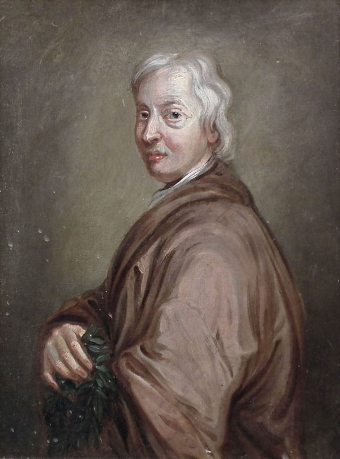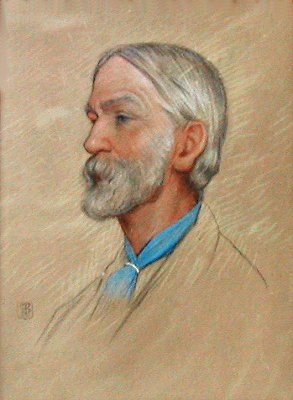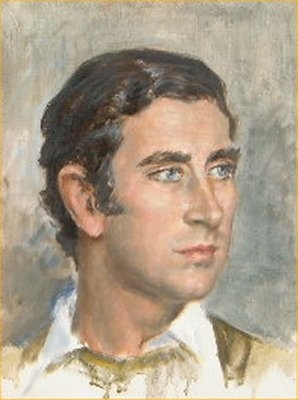the tribute money
- View other items in:
- antiques interior design modern and vintage
- other interior design
artware ltd
Enquire about this antique
Artware Ltd has 565 antiques for sale.
click here to see them all
the original painting is in the collection of the Fine Arts Museums of San Francisco, Legion of Honor Museum purchase, M.H. de Young Art Trust Fund, 44.11
The Tribute Money, ca 1612, Peter Paul Rubens (1577 - 1640) -According to the Gospels, when Jesus entered Jerusalem, a group of Pharisees tried to entrap Him. They went to Jesus and asked provocative questions that if answered could land Him in Jail. One of them asked if taxes should be paid to Rome. Jesus pointed to God with one hand and to Caesar with the other and said, ''Render onto Caesar what is his and to God what is His.'' The Pharisees were shocked by such a wise answer.
-This picture is one of the great masterpieces of the Fine Arts Museums of San Francisco, Legion of Honor. A copy hangs in the Louvre. Rubens was one of the great Baroque painters and is famous for his realism and natural color. Many other painters copied his style and eventually a school of painters established themselves as ''colorists''. A divide between the colorists and ''classicists'' (followers of Nicolas Poussin, Gallery 6) lasted for several generations. -The ''tribute money'' theme arose when the Catholic Church was under attack by the Holy Roman Emperor Charles V around the time of the Sack of Rome (1527)
Peter Paul Rubens (June 28, 1577 - May 30, 1640) was a prolific seventeenth-century Flemish Baroque painter, and a proponent of an exuberant Baroque style that emphasized movement, color, and sensuality. He is well-known for his Counter-Reformation altarpieces, portraits, landscapes, and history paintings of mythological and allegorical subjects. In addition to running a large studio in Antwerp which produced paintings popular with nobility and art collectors throughout Europe, Rubens was a classically-educated humanist scholar, art collector, and diplomat who was knighted by both Philip IV, king of Spain, and Charles I, king of England.
Rubens was born in Siegen, Westphalia, to Jan Rubens and Maria Pypelincks. His father, a Calvinist, and mother fled Antwerp for Cologne in 1568, after increased religious turmoil and persecution of Protestants during the rule of the Spanish Netherlands by the Duke of Alba. Jan Rubens became the legal advisor (and lover) to Anna of Saxony, the second wife of William I of Orange, and settled at her court in Siegen in 1570. Following imprisonment for the affair, Peter Paul Rubens was born in 1577. The family returned to Cologne the next year. In 1589, two years after his father''s death, Rubens moved with his mother to Antwerp, where he was raised Catholic. Religion figured prominently in much of his work and Rubens later became one of the leading voices of the Catholic Counter-Reformation style of painting. In Antwerp, Rubens received a humanist education, studying Latin and classical literature. By fourteen he began his artistic apprenticeship with Tobias Verhaeght. Subsequently, he studied under two of the city''s leading painters of the time, the late mannerists Adam van Noort and Otto van Veen. Much of his earliest training involved copying earlier artists'' works, such as woodcuts by Hans Holbein the Younger and Marcantonio Raimondi''s engravings after Raphael. Rubens completed his education in 1598, at which time he entered the Guild of St. Luke as an independent master.
In 1600, Rubens traveled to Italy. He stopped first in Venice, where he saw paintings by Titian, Veronese, and Tintoretto, before settling in Mantua at the court of duke Vincenzo I of Gonzaga. The coloring and compositions of Veronese and Tintoretto had an immediate effect on Rubens''s painting, and his later, mature style was profoundly influenced by Titian. With financial support from the duke, Rubens traveled to Rome by way of Florence in 1601. There, he studied classical Greek and Roman art and copied works of the Italian masters. The Hellenistic sculpture Laocoon and his Sons was especially influential on him, as was the art of Michelangelo, Raphael and Leonardo da Vinci. He was also influenced by the recent, highly naturalistic paintings by Caravaggio. He later made a copy of that artist''s Entombment of Christ, recommended that his patron, the duke of Mantua, purchase The Death of the Virgin (Louvre), and was instrumental in the acquisition of The Madonna of the Rosary (Kunsthistorisches Museum, Vienna) for the Dominican church in Antwerp. During this first stay in Rome, Rubens completed his first altarpiece commission, St. Helena with the True Cross for the Roman church, Santa Croce in Gerusalemme. Rubens traveled to Spain on a diplomatic mission in 1603, delivering gifts from the Gonzagas to the court of Philip III. While there, he viewed the extensive collections of Raphael and Titian that had been collected by Philip II. He also painted an equestrian portrait of the Duke of Lerma during his stay (Prado, Madrid) that demonstrates the influence of works like Titian''s Charles V at Muhlberg (1548; Prado, Madrid). This journey marks the first of many during his career that would combine art and diplomacy.
He returned to Italy in 1604, where he remained for the next four years-first in Mantua, and then in Genoa and Rome. In Genoa, Rubens painted numerous portraits, such as the Marchesa Brigida Spinola-Doria (National Gallery of Art, Washington, D.C.), in a style that would influence later paintings by Anthony van Dyck, Joshua Reynolds, and Thomas Gainsborough. He also began a book illustrating the palaces in the city. From 1606 to 1608, he was largely in Rome. During this period Rubens received his most important commission to date for the high altar of the city''s most fashionable new church, Santa Maria in Vallicella (or, Chiesa Nuova). The subject was to be St. Gregory the Great and important local saints adoring an icon of the Virgin and Child. The first version, a single canvas (Musee des Beaux-Arts, Grenoble), was immediately replaced by a second version on three slate panels that permits the actual miraculous holy image of the "Santa Maria in Vallicella" to be revealed on important feast days by a removable copper cover, also painted by the artist. The impact of Italy on Rubens was great. Besides the artistic influences, he continued to write many of his letters and correspondences in Italian for the rest of his life, signed his name as "Pietro Paolo Rubens", and spoke longingly of returning to the peninsula-a hope that never materialized.
Upon hearing of his mother''s illness in 1608, Rubens planned his departure from Italy for Antwerp. However, she died before he made it home. His return coincided with a period of renewed prosperity in the city with the signing of Treaty of Antwerp in April 1609, which initiated the Twelve Years'' Truce. In September of that year Rubens was appointed court painter by Albert and Isabella, the governors of the Low Countries. He received special permission to base his studio in Antwerp, instead of at their court in Brussels, and to also work for other clients. He remained close to the Archduchess Isabella until her death in 1633, and was called upon not only as a painter but also as an ambassador and diplomat. Rubens further cemented his ties to the city when, on October 3, 1609, he married Isabella Brant, the daughter of a leading Antwerp citizen and humanist Jan Brant. In 1610, Rubens moved into a new house and studio that he designed. Now the Rubenshuis museum, the Italian-influenced villa in the center of Antwerp contained his workshop, where he and his apprentices made most of the paintings, and his personal art collection and library, both among the most extensive in Antwerp. During this time he built up a studio with numerous students and assistants. His most famous pupil was the young Anthony van Dyck, who soon became the leading Flemish portraitist and collaborated frequently with Rubens. He also frequently collaborated with the many specialists active in the city, including the animal painter Frans Snyders, who contributed to the eagle to Prometheus Bound and his good friend the flower-painter Jan Brueghel the Elder. Altarpieces such as The Raising of the Cross (1610) and The Descent from the Cross (1611-1614) for the Cathedral of Our Lady were particularly important in establishing Rubens as Flanders'' leading painter shortly after his return. The Raising of the Cross, for example, demonstrates the artist''s synthesis of Tintoretto''s Crucifixion for the Scuola di San Rocco in Venice, Michelangelo''s dynamic figures, and Rubens''s own personal style. This painting has been held as a prime example of Baroque religious art. Rubens used the production of prints and book title-pages, especially for his friend Balthasar Moretus-owner of the large Plantin-Moretus publishing house to further extend his fame throughout Europe during this part of his career. With the exception of a couple of brilliant etchings, he only produced drawings for these himself, leaving the printmaking to specialists, such as Lucas Vorsterman. He recruited a number of engravers trained by Goltzius, who he carefully schooled in the more vigorous style he wanted. He also designed the last significant woodcuts before the 19th century revival in the technique. Rubens established copyright for his prints. Most significantly in Holland, where his work was widely copied through print. In addition he established copyrights for his work in England, France and Spain.
In 1621, the queen-mother of France, Marie de'' Medici, commissioned Rubens to paint two large allegorical cycles celebrating her life and the life of her late husband, Henry IV, for the Luxembourg Palace in Paris. The Marie de'' Medici cycle (now in the Louvre) was installed in 1625, and although he began work on the second series it was never completed. Marie was exiled from France in 1630 by her son, Louis XIII, and died in 1642 in the same house in Cologne where Rubens had lived as a child. After the end of the Twelve Years'' Truce in 1621, the Spanish Habsburg rulers entrusted Rubens with a number of diplomatic missions. Between 1627 and 1630, Rubens''s diplomatic career was particularly active, and he moved between the courts of Spain and England in an attempt to bring peace between the Spanish Netherlands and the United Provinces. He also made several trips to the Northern Netherlands as both an artist and a diplomat. At the courts he sometimes encountered the attitude that courtiers should not use their hands in any art or trade, but he was also received as a gentleman by many. It was during this period that Rubens was twice knighted, first by Philip IV of Spain in 1624, and then by Charles I of England in 1630. He was awarded an honorary Master of Arts degree from Cambridge University in 1629. Rubens was in Madrid for eight months in 1628-1629. In addition to diplomatic negotiations, he executed several important works for Philip IV and private patrons. He also began a renewed study of Titian''s paintings, copying numerous works including the Madrid Fall of Man (1628-29; illustrated right). During this stay, he befriended the court painter Diego Velazquez. The two planned to travel to Italy together the following year. Rubens, however, returned to Antwerp and Velazquez made the journey without him. His stay in Antwerp was brief, and he soon traveled on to London. Rubens stayed there until April, 1630. An important work from this period is the Allegory of Peace and War (1629; National Gallery, London). It illustrates the artist''s strong concern for peace, and was given to Charles I as a gift. While Rubens''s international reputation with collectors and nobility abroad continued to grow during this decade, he and his workshop also continued to paint monumental paintings for local patrons in Antwerp. The Assumption of the Virgin Mary (1625-6) for the Cathedral of Antwerp is one prominent example.
Rubens''s last decade was spent in and around Antwerp. Major works for foreign patrons still occupied him, such as the ceiling paintings for the Banqueting House at Inigo Jones''s Palace of Whitehall, but he also explored more personal artistic directions. In 1630, four years after the death of his first wife, the 53-year-old painter married 16-year-old Helene Fourment. Helene inspired the voluptuous figures in many of his paintings from the 1630s, including The Feast of Venus (Kunsthistorisches Museum, Vienna), The Three Graces (Prado, Madrid) and The Judgment of Paris (Prado, Madrid). In the latter painting, which was made for the Spanish court, the artist''s young wife was recognized by viewers in the figure of Venus. In an intimate portrait of her, Helene Fourment in a Fur Wrap, also known as Het Pelsken (illustrated left), Rubens''s wife is even partially modeled after classical sculptures of the Venus Pudica, such as the Medici Venus. In 1635, Rubens bought an estate outside of Antwerp, the Chateau de Steen (Het Steen), where he spent much of his time. Landscapes, such as his Chateau de Steen with Hunter (National Gallery, London; illustrated right) and Farmers Returning from the Fields (Pitti Gallery, Florence), reflect the more personal nature of many of his later works. He also drew upon the Netherlandish traditions of Pieter Bruegel the Elder for inspiration in later works like Flemish Kermis (c. 1630; Louvre, Paris). Rubens died from gout on May 30, 1640. He was interred in Saint Jacob''s church, Antwerp. The artist had eight children, three with Isabella and five with Helene; his youngest child was born eight months after his death.
Antiques.co.uk Ref: 7KEX639E
- Materials:
- Oil on Panel
- Width (cm):
- 48.26 x 63.50 cm 19.00 x 25.00 ins
Artware Ltd
Artware Fine Art specialises in fine antique, decorative and historical portraits and topographical pictures . We cover a period from the 17th and 18th centuries through to the 19th & 20th Centuries. We have over 150 portraits in stock, which can be viewed on our web site, each historical portrait has well researched biographical information both on the sitter and the artist.
Contact details
18 La gare
51 Surrey row
London
Greater London
SE1 0BZ
UNITED KINGDOM
T: 0207 921 97904
E: greg@artwarefineart.com
W: www.artwarefineart.com














